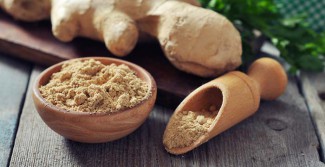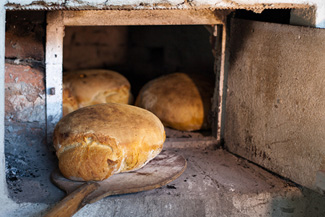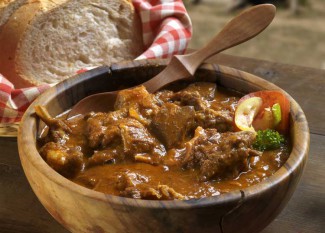 Many medieval dishes are actually the forerunners of modern day recipes. Good, old fashioned stew is a great example of a medieval dish that is as popular now as it was centuries ago.
Many medieval dishes are actually the forerunners of modern day recipes. Good, old fashioned stew is a great example of a medieval dish that is as popular now as it was centuries ago.
If you want to cook a medieval dish, the Recipes Grid is the place to look for ideas!
To many of us today, medieval dishes look a little unusual at first glance but there are many common threads. Some dishes have changed very little, if at all.
Other recipes have been completely transformed. The main reason for this is the availability of more ingredients. A good example is that of potatoes, not seen in Europe until the late 16th century.
One consistent fact remains – the essential, staple foods of medieval Europe, such as bread, meat, fish and vegetables, were just as important in the 12th century as they are today.
How Have Recipes Survived?
There is little, contemporary documentation for medieval dishes and their recipes from 12th century Europe. This was because only a low percentage of the population were literate. However, historians have discovered some genuine, original written records about medieval cooking. The primary one from medieval England is called “The Forme of Cury”. It lists no fewer than 200 recipes from the era of King Richard II of England. (Cury is old English for cookery)
Many recipes of course have been passed down by word of mouth, from generation to generation. Over the centuries people have drawn on this inherited knowledge – for two reasons. Firstly, to continue eating what their ancestors ate. Secondly, to refine some recipes by varying the ingredients. For example, few people today bake with barley as was traditional in medieval times. Instead they use wheat when baking bread.
Follow the links to the individual sections of recipes in this site, such as bread recipes, and you will begin to discover some surprising facts.
Some of these facts will relate to similarities between medieval dishes and modern ones. Others will be the entire opposite, particularly when it comes to the ingredients used.
 Once you have decided which type of medieval dish interests you the most, you can try out a recipe in your own kitchen! When I first became interested in medieval food, that’s just what I did.
Once you have decided which type of medieval dish interests you the most, you can try out a recipe in your own kitchen! When I first became interested in medieval food, that’s just what I did.
The Recipes Grid offers a quick overview of the different medieval dishes I have published to date. I’ve even come up with a medieval ice cream recipe.
Medieval Dish vs Modern Recipe
A great example of similarity between medieval and modern food is beef and red wine stew. It’s a good recipe which is as relevant today as it was in medieval times. Beef stew has long been a popular meat dish. The ingredients may have changed over the years but only a little and not radically. It is still essentially a beef stew with red wine!
One of the major differences between medieval and modern food is salad. Salad was quite different then to the salad we know today. Lettuce, tomatoes and cucumber that many of us grew up with were simply not available in medieval Europe. Medieval salad recipes consisted mainly of flowers and herbs.One of the most notable things about food from that period is that it echoed a class division. Food for the rich and food for the poor.
Recipe Variations In Medieval Times
The common medieval man and his family (peasants) had far fewer ingredients available to them. They often kept chickens but generally did not eat them as they were needed to produce eggs. They were not allowed to hunt in the forests owned by nobles, so deer and wild boar were meats only for the lord’s table. The same applied to freshwater fish. So the average working family’s diet was quite bland. Herbs and vegetables and bread formed the core of their diet.
You can read more about this on my introductory page about medieval food in general. I have selected a variety of medieval dishes to feature in this website. The idea is to reflect the different diets of both the medieval noble and medieval peasants. I hope you will find enjoyment and excitement in the taste experience they offer.



